Szukasz nart, które radzą sobie z POWDER i mieszanymi warunkami jak profesjonalista? Oto co się dzieje: krótsze narty zdobywają rynek w [2025]. Zapomnij o starej szkole, że tylko długie narty się liczą. Marki takie jak Snowfeet* prowadzą rewolucję z kompaktowymi, lekkimi projektami, które są łatwiejsze w obsłudze, bardziej przenośne i zaskakująco skuteczne na głębokim śniegu.
Dlaczego krótkie narty wygrywają:
- Zwinność: Idealne na ciasne przejazdy między drzewami, muldy i szybkie skręty.
- Przenośność: Mieszczą się w plecaku – koniec z noszeniem dużego sprzętu.
- Łatwość użycia: Przyjazne dla początkujących i świetne do szybkiej nauki.
- Cena: Bardziej przystępne w porównaniu do tradycyjnych zestawów.
Najlepsze wybory:
- Snowfeet* Skiblades 99 POWDER ($490): Kompaktowe, zabawne i świetne na POWDER.
- Snowfeet* WALKSKI Backcountry ($690): Idealne na przygody w terenie.
- Blizzard Rustler 9 ($750): Stabilne, ale mniej zwinne w ciasnych przestrzeniach.
- Armada ARW 112 ($700): Dobre na POWDER, ale masywne i drogie.
- Salomon QST X ($650): Niezawodne, ale mają trudności w trudnym terenie.
- Völkl Revolt 114 ($850): Stworzone do prędkości, nie do przenoszenia.
Szybkie porównanie:
| Funkcje | Snowfeet* Skiblades | Snowfeet* WALKSKI | Rustler 9 | ARW 112 | QST X | Revolt 114 |
|---|---|---|---|---|---|---|
| Długość | 39 cali | 39 cali | 73–75 cali | 69–75 cali | 67–73 cali | 69–75 cali |
| Waga | Ultralekki | Lekkie | Ciężkie | Umiarkowana | Umiarkowana | Ciężkie |
| Cena (USD) | $490 | $690 | $750 | $700 | $650 | $850 |
| Unoszą się w POWDER | Świetne | Świetne | Dobre | Bardzo dobre | Dobre | Doskonałe |
| Przenośność | Przyjazne dla plecaka | Przyjazne dla plecaka | Pojemne | Pojemne | Pojemne | Pojemne |
| Opcje butów | Większość typów | Większość typów | Buty narciarskie | Buty narciarskie | Buty narciarskie | Buty narciarskie |
Jeśli chcesz nart lekkich, zabawnych i łatwych do przenoszenia, Snowfeet* to prawdziwa rewolucja. Niezależnie od tego, czy jesteś początkującym, doświadczonym narciarzem, czy kimś, kto po prostu nie znosi dźwigać sprzętu, te krótsze narty sprawdzą się na każdym polu.
Najlepsze narty freeride na wielkie góry 2024-2025 | Powder7
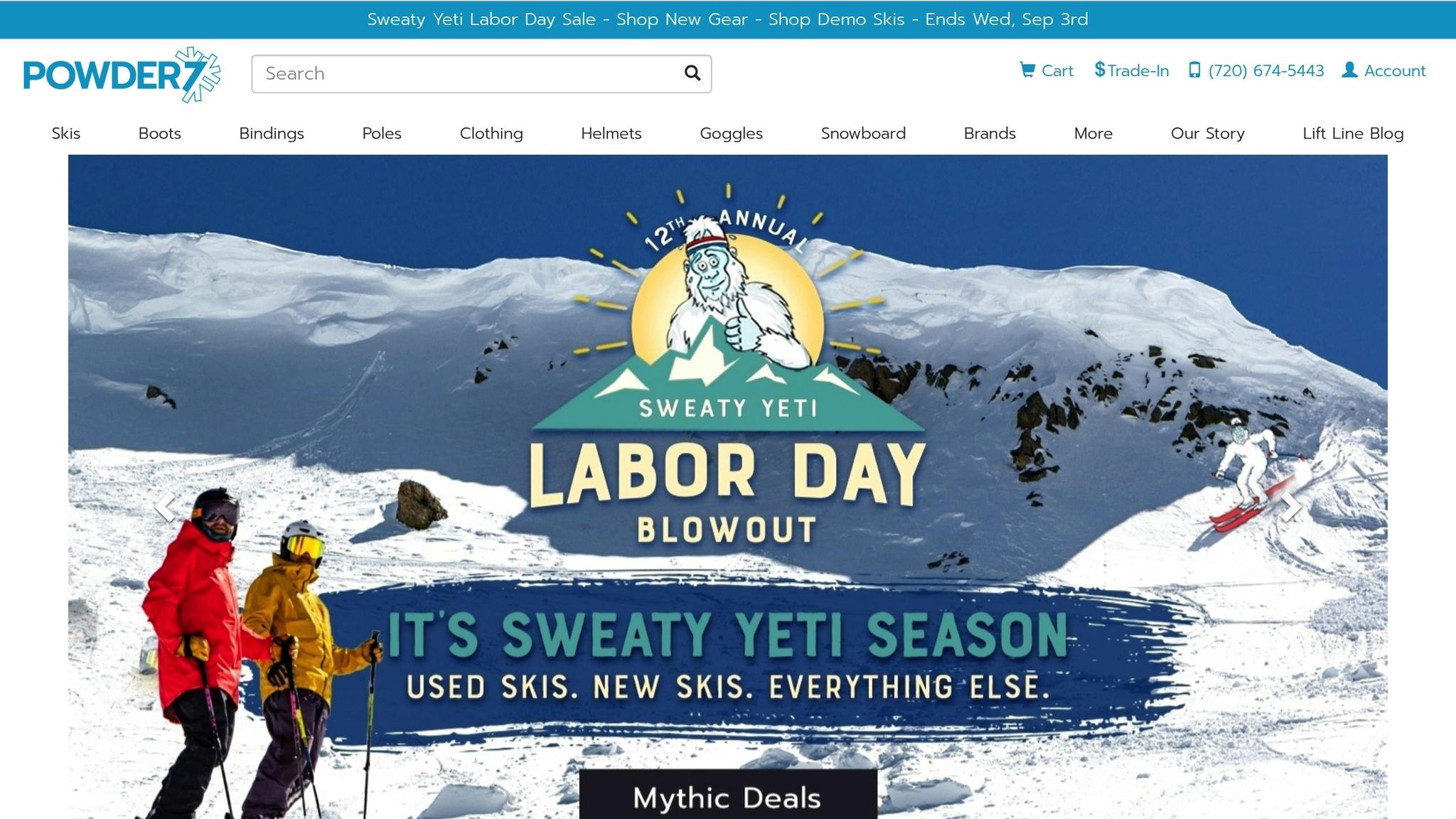
1. Snowfeet* Skiblades 99 POWDER
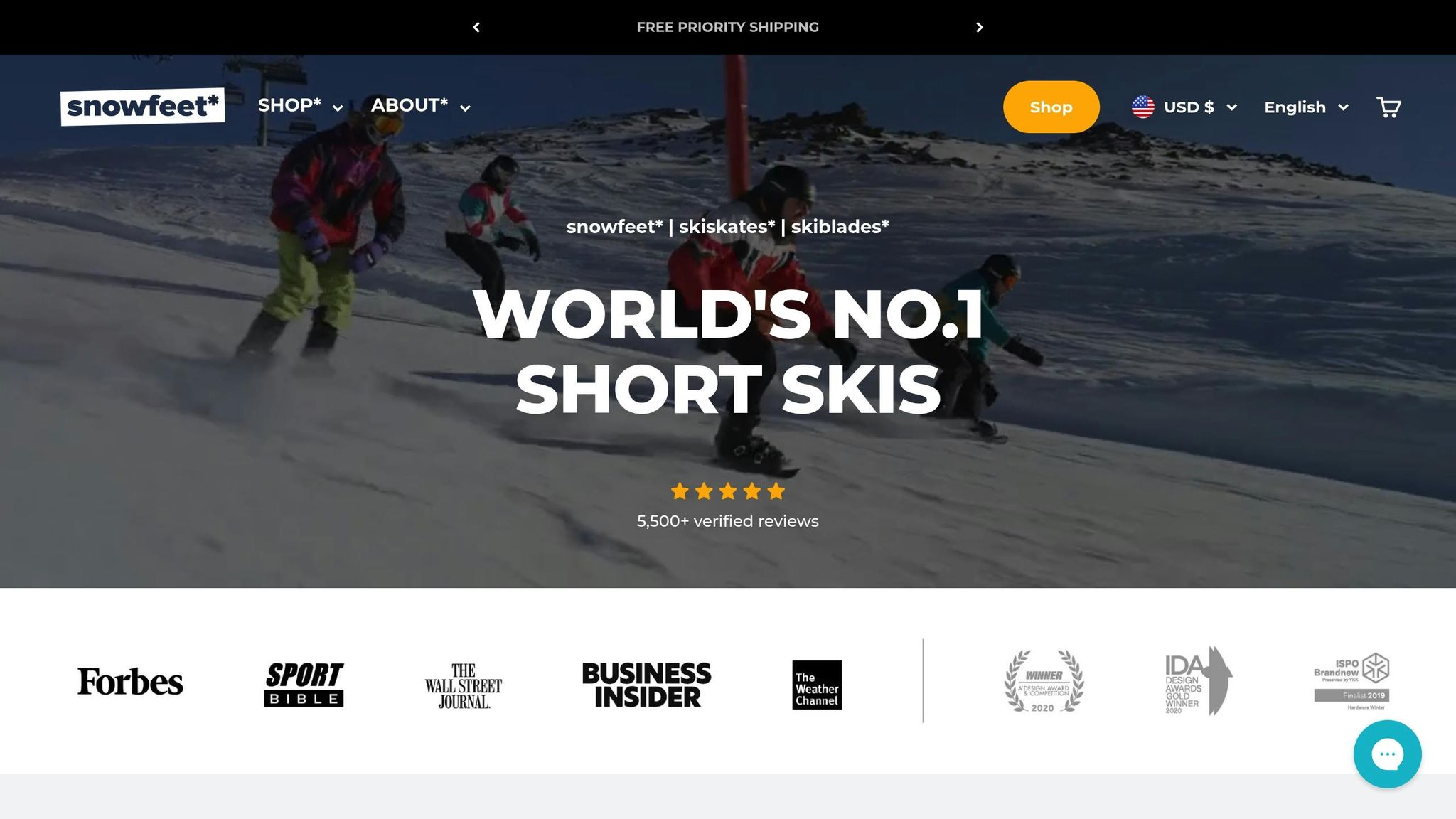
Snowfeet* Skiblades 99 POWDER udowadniają, że mniej czasem znaczy więcej, jeśli chodzi o freeride. Mając zaledwie 39 cali (99 cm) długości, te kompaktowe skiblades przeczą tradycyjnemu podejściu długich nart preferowanemu przez marki takie jak Salomon i Völkl. Zamiast polegać na długości, Snowfeet* wyposażył te skiblades w inteligentne funkcje zapewniające najwyższą wydajność. Przyjrzyjmy się, co je wyróżnia.
Doskonałe unoszenie w POWDER
Nie daj się zwieść ich rozmiarowi - te skiblades błyszczą w głębokim śniegu. Dzięki szerokiemu, rockered czubkowi zapewniają doskonałe unoszenie nawet w warunkach POWDER. Rockered design minimalizuje kontakt krawędzi narty ze śniegiem, pozwalając czubkom naturalnie unosić się i płynnie sunąć przez różne głębokości śniegu.
Łatwa manewrowość w ciasnych miejscach
Jedną z największych zalet Skiblades 99 POWDER jest ich zwinność. Krótka długość i lekka konstrukcja sprawiają, że manewrowanie między gęstymi drzewami, muldami i wąskimi żlebami jest niezwykle łatwe. Dzięki bardzo małemu promieniowi skrętu, te skiblades pozwalają na niemal natychmiastowe obracanie i zmianę kierunku - coś trudnego do osiągnięcia na tradycyjnych nartach dłuższych niż 180 cm.
Ultra przenośne i lekkie
Mobilność to prawdziwa zmiana gry z tymi skiblades. W przeciwieństwie do pełnowymiarowych nart, które często wymagają bagażników dachowych lub dużych pokrowców, Skiblades 99 POWDER łatwo zmieszczą się w zwykłym plecaku. Ta kompaktowa konstrukcja nie tylko ułatwia podróżowanie - pomaga też zmniejszyć zmęczenie podczas długich wypraw w teren.
Kompatybilne z większością butów narciarskich
Kolejnym atutem tych skiblades jest ich kompatybilność z różnymi butami narciarskimi. Niezależnie od tego, czy używasz standardowych butów alpejskich, czy modeli turystycznych, prawdopodobnie będą działać bez problemu. Nie musisz wydawać fortuny na specjalistyczne obuwie - wystarczy, że buty dobrze trzymają się w wiązaniach dla najlepszej wydajności i bezpieczeństwa.
Poziom cenowy
W cenie 490 USD, Skiblades 99 POWDER oferują solidną ofertę w porównaniu do droższych nart freeride, takich jak Blizzard Rustler 9 czy Armada ARW 112, które zwykle kosztują od 750 do 850 USD. Otrzymujesz podobną wydajność za ułamek ceny, dzięki efektywnemu podejściu projektowemu Snowfeet* i sprzedaży bezpośredniej do klienta. Chodzi o dostarczenie wydajności bez zbędnej masy czy wysokiej ceny.
2. Snowfeet* WALKSKI Backcountry Touring Skis
Snowfeet* WALKSKI Backcountry Touring Skis, mierzące zaledwie 39 cali (100 cm), wprowadzają świeże podejście do narciarstwa poza trasami. W przeciwieństwie do tradycyjnych zestawów opierających się na znacznie dłuższych nartach, te kompaktowe narty udowadniają, że krótsze czasem znaczy lepsze - zwłaszcza gdy mamy do czynienia z nieprzewidywalnymi warunkami górskimi. Przyjrzyjmy się, dlaczego WALKSKI wyróżnia się w terenie.
Unoszenie się na POWDER
Nie daj się zwieść rozmiarowi - te narty radzą sobie z głębokim śniegiem jak profesjonaliści. Dzięki przemyślanemu rockerowi i szerszemu profilowi utrzymują się na powierzchni nawet w miękkim, głębszym POWDER. Rockerowany czubek pomaga nartom naturalnie unosić się przez różne głębokości śniegu, utrzymując Cię stabilnym, czy to podczas ślizgu po twardej porannej skorupie, czy rzeźbienia w puszystym popołudniowym śniegu.
Zwinność w ciasnym terenie
Gdzie WALKSKI naprawdę błyszczy, to trudny, techniczny teren. Mając zaledwie 39 cali, oferują bardzo ciasny promień skrętu, co czyni je idealnymi do przeciskania się przez gęste drzewa, nawigowania w wąskich couloirach czy pokonywania stromych, ciasnych odcinków. Podczas gdy marki takie jak Atomic czy Rossignol dominują na otwartych stokach, WALKSKI jest stworzony na te momenty, gdy precyzja i szybkie zmiany kierunku są kluczowe.
Przenośność i waga
Te narty to przede wszystkim wygoda. Mieszczą się schludnie w standardowym plecaku turystycznym, co oznacza brak potrzeby noszenia nieporęcznych nosideł na narty, które haczą o gałęzie lub zaburzają równowagę. Dodatkowo są łatwe w podróży - nie musisz martwić się o opłaty za nadbagaż podczas lotu. Po prostu zapakuj je i ruszaj.
Kompatybilność butów
System wiązań jest na tyle uniwersalny, że działa z większością standardowych butów turystycznych, a nawet zwykłych butów trekkingowych. Niezależnie czy używasz lekkich butów turystycznych od Scarpa lub Dynafit, czy po prostu wolisz buty podejściowe na krótsze wypady, te narty spełnią Twoje oczekiwania.
Cena (USD)
W cenie 690 USD, WALKSKI oferuje solidną ofertę. Eliminując pośredników dzięki sprzedaży bezpośredniej, dostarczają profesjonalną wydajność bez wysokiej ceny tradycyjnych zestawów, które często wymagają osobnych inwestycji w narty, wiązania i specjalistyczne buty.
3. Blizzard Rustler 9
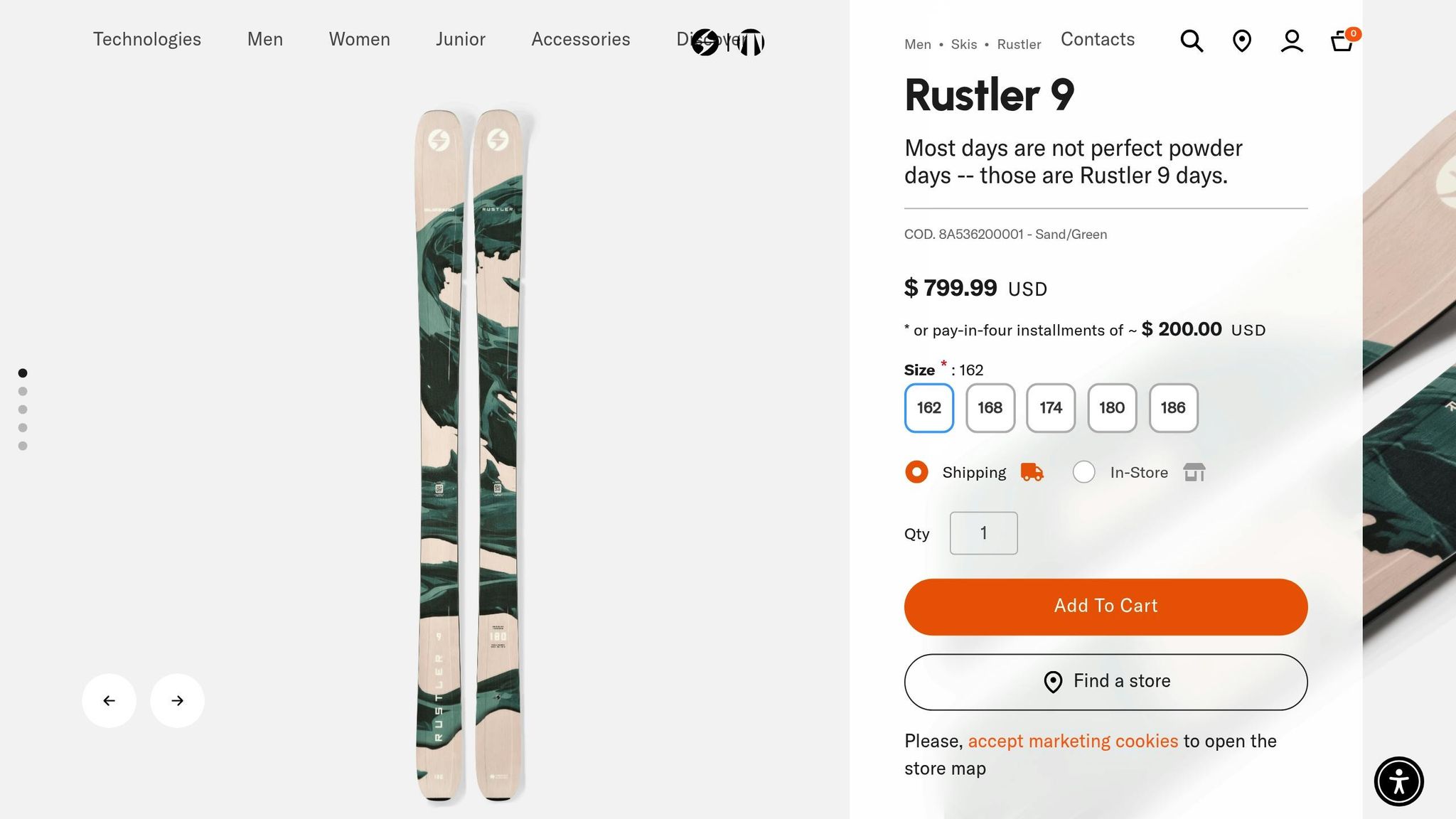
Blizzard Rustler 9 to klasyczna narta freeride stworzona do przygód w całych górach. Jej dłuższy design zapewnia stabilność i wydajność, ale wiąże się z pewnymi kompromisami, zwłaszcza w porównaniu z kompaktowymi i innowacyjnymi Snowfeet*.
Unoszenie się na POWDER
Szeroki, rockerowy profil Rustler 9 dobrze radzi sobie z głębokim POWDER, oferując solidną stabilność. Jednak w cięższym, gęstszym śniegu jego większa powierzchnia może sprawiać wrażenie ociężałej - czego narty Snowfeet* unikają dzięki lekkiej i zwinnej konstrukcji.
Zwinność w ciasnym terenie
Jeśli chodzi o ciasne zakręty i techniczny teren, większy promień skrętu Rustler 9 może być ograniczający. Narty Snowfeet*, z drugiej strony, zostały zaprojektowane do szybkich, precyzyjnych manewrów, dając im przewagę w trudnych miejscach.
Przenośność i waga
Transportowanie Rustler 9 może być uciążliwe. Jego rozmiar oznacza, że potrzebujesz specjalistycznych pokrowców na narty lub nawet bagażników dachowych. W przeciwieństwie do tego, narty Snowfeet* są ultra-przenośne, łatwo mieszczą się w plecaku dla maksymalnej wygody.
Kompatybilność butów
Rustler 9 używa tradycyjnych wiązań alpejskich, które wymagają standardowych, cięższych butów narciarskich. Narty Snowfeet* stosują inne podejście, oferując uniwersalne systemy wiązań kompatybilne z wieloma typami butów, co czyni je bardziej wszechstronnymi.
Cena (USD)
Rustler 9 jest wyceniony w średnim segmencie, ale musisz doliczyć dodatkowe koszty wiązań i profesjonalnego montażu. Snowfeet* pomija te dodatki, oferując bardziej budżetową, gotową do użycia opcję prosto z pudełka.
4. Armada ARW 112
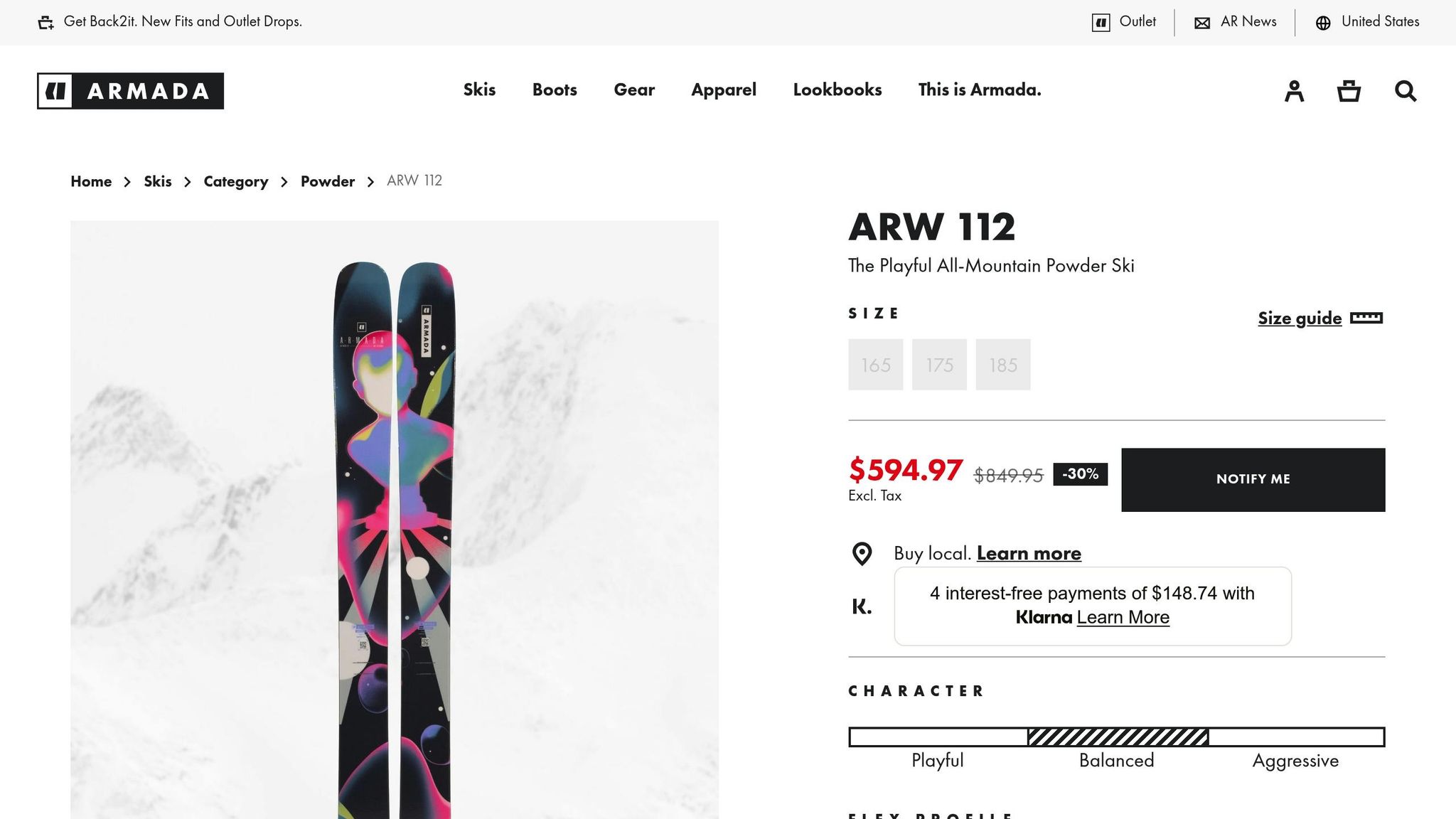
Armada ARW 112 trzyma się klasycznego designu freeride. Został stworzony dla entuzjastów POWDER, ale ma pewne ograniczenia, które pokazują, dlaczego narty Snowfeet* mogą być mądrzejszym wyborem dla nowoczesnych riderów.
Unoszenie się na POWDER
ARW 112 jest zaprojektowany do POWDER, ma talię 112 mm oraz rockery na czubkach i ogonach, które utrzymują Cię na powierzchni świeżego śniegu. Ale jest haczyk: najlepiej sprawdza się przy wyższych prędkościach i ma trudności w mieszanych warunkach śniegowych. Narty Snowfeet* z kolei radzą sobie z różnorodnym terenem z łatwością, nawet przy wolniejszej jeździe.
Zwinność w ciasnym terenie
Dzięki szerokiej talii i większej długości, ARW 112 ma większy promień skrętu. Utrudnia to nawigację po ciasnych ścieżkach między drzewami lub stromych, wąskich żlebach. Szybkie, precyzyjne skręty? To nie jego mocna strona. Narty Snowfeet* błyszczą tutaj, oferując szybkie przejścia i zwinne prowadzenie - idealne na trudne miejsca w górach.
Przenośność i waga
Każda narta ARW 112 waży około 4,5 funta i ma prawie 6 stóp długości. Oznacza to, że transport może być uciążliwy i wymagać dużego bagażu. Z drugiej strony, narty Snowfeet* są na tyle kompaktowe, że mieszczą się w plecaku, co czyni je bardzo łatwymi do przenoszenia.
Kompatybilność butów
ARW 112 korzysta z tradycyjnych wiązań alpejskich, co oznacza, że potrzebujesz ciężkich, specjalistycznych butów. Dodatkowo montaż tych wiązań zwykle wymaga pomocy profesjonalisty, co zwiększa koszty i wysiłek. Narty Snowfeet* omijają te komplikacje dzięki uniwersalnym wiązaniom, które pasują do większości typów butów, oszczędzając Twój czas i pieniądze.
Cena (USD)
ARW 112 ma wysoką cenę, wahającą się od 600 do 700 dolarów. Po doliczeniu wiązań, montażu i butów, całkowity koszt może przekroczyć 1 375 dolarów. W przeciwieństwie do tego, narty Snowfeet* oferują kompletny, gotowy do użycia zestaw w znacznie przystępniejszej cenie. Ta przystępność czyni narty Snowfeet* atrakcyjną opcją dla oszczędnych riderów, którzy nie chcą rezygnować z zabawy.
sbb-itb-17ade95
5. Salomon QST X
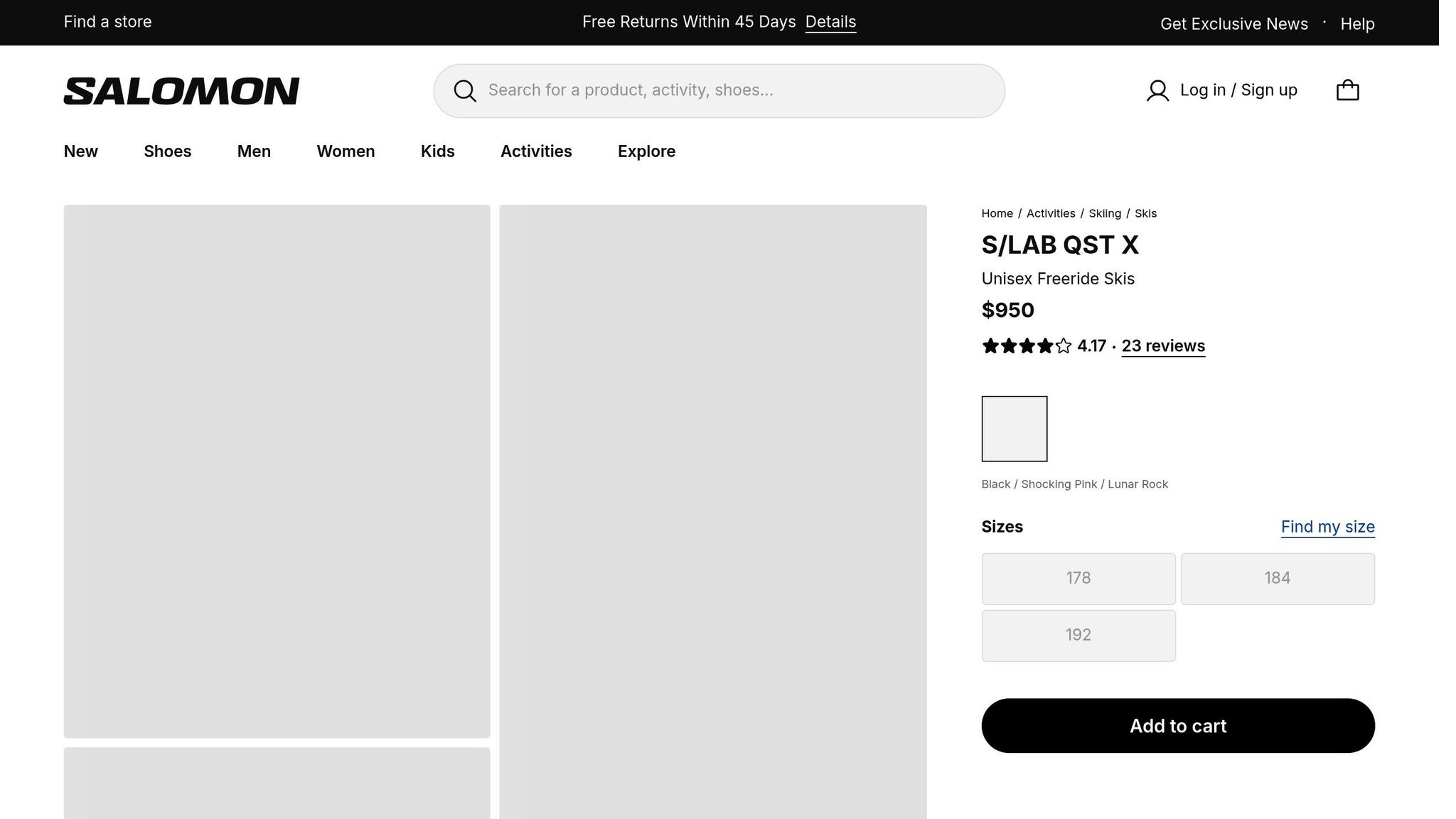
Salomon QST X trzyma się klasycznego designu nart all-mountain. Choć niezawodne, brakuje im zwinności i nowoczesnego charakteru, które oferują narty Snowfeet*. Rozłóżmy to na czynniki pierwsze.
Unoszenie się na POWDER
QST X ma szerszą talię i profil rocker, które pomagają ślizgać się po POWDER. Ale jest haczyk - najlepiej sprawdza się przy wyższych prędkościach. Z kolei narty Snowfeet*, dzięki krótszemu i bardziej specjalistycznemu designowi, zapewniają solidne unoszenie nawet przy wolniejszej jeździe. Ta różnica staje się jeszcze bardziej zauważalna podczas pokonywania ciasnego lub trudnego terenu.
Zwinność w ciasnym terenie
Jeśli chodzi o techniczne zjazdy, QST X stawia na stabilność przy szybkich zjazdach. Jednak jego dłuższy kształt utrudnia szybkie skręty, zwłaszcza w wąskich miejscach, takich jak przejazdy między drzewami. Narty Snowfeet*, dzięki kompaktowej budowie, pozwalają na łatwe pivotowanie i zmianę krawędzi, co czyni je lepszym wyborem na nieprzewidywalne warunki.
Przenośność i waga
Prawda jest taka: QST X jest nieporęczny. Transport i przechowywanie mogą być uciążliwe. Narty Snowfeet* to marzenie dla każdego, kto ceni wygodę. Są lekkie i na tyle małe, że zmieszczą się do zwykłego plecaka, co znacznie ułatwia wyjazd na stok.
Kompatybilność butów
Tradycyjne narty alpejskie, takie jak QST X, wymagają ciężkich butów i profesjonalnego montażu wiązań. Narty Snowfeet* omijają to całkowicie dzięki uniwersalnym wiązaniom, które pasują do różnych butów. To oznacza mniej kłopotów i więcej elastyczności przy przygotowaniach.
Cena
Zestaw QST X może być kosztowny, gdy doliczysz wiązania, montaż i specjalistyczne buty. Narty Snowfeet* oferują prostą, gotową do użycia opcję, która jest bardziej przyjazna dla portfela.
6. Völkl Revolt 114
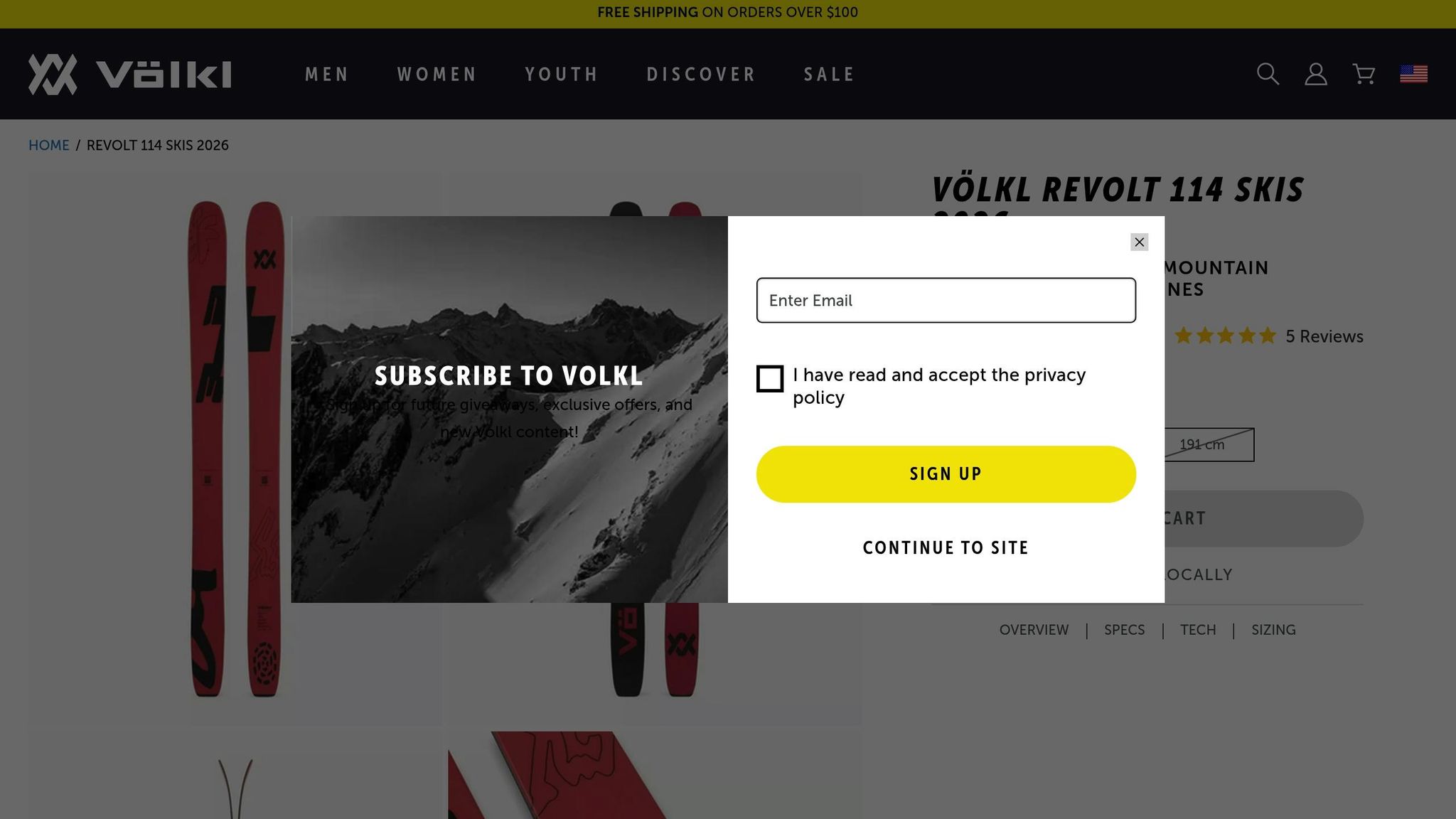
Völkl Revolt 114 trzyma się klasycznej formuły freeride: jest masywna, wytrzymała i stworzona do pewnego zjazdu po górze. Solidna konstrukcja zapewnia stabilność w nieprzewidywalnych warunkach, ale dodatkowa waga może być minusem przy manewrowaniu lub przenoszeniu. Przyjrzyjmy się, jak radzi sobie na POWDER, w ciasnych miejscach i pod względem przenośności.
Unoszenie się na POWDER
Z talią 114 mm ta narta została zaprojektowana, by radzić sobie z głębokim POWDER jak mistrz – zwłaszcza gdy pędzisz po stoku z dużą prędkością.
Zwinność w ciasnym terenie
Choć świetnie sprawdza się na prostych, agresywnych zjazdach, jego waga może utrudniać szybkie skręty w ciasnych miejscach. W przeciwieństwie do lekkich nart Snowfeet*, które stawiają na zwinne i precyzyjne ruchy, Revolt 114 priorytetowo traktuje stabilność nad zwrotność.
Przenośność i waga
Ta solidna konstrukcja ma swoją cenę: nie jest to najłatwiejsza narta do noszenia, zwłaszcza podczas wypraw backcountry. Z drugiej strony, kompaktowe i lekkie opcje, takie jak narty Snowfeet*, są znacznie bardziej praktyczne do przenoszenia. Ten kontrast podkreśla rosnący trend w freeride’owym narciarstwie – sprzęt łączący zabawę i funkcjonalność bez ciężaru tradycyjnych konstrukcji.
Porównanie funkcji i osiągów
Gdy zestawisz funkcje i osiągi różnych opcji nart, różnice stają się całkiem jasne. Poniższa tabela pokazuje, jak innowacyjne projekty krótkich nart wypadają na tle tradycyjnych długich nart, podkreślając, co sprawdza się najlepiej w zależności od Twoich potrzeb na stoku.
| Funkcje | Snowfeet* Skiblades 99 POWDER | Snowfeet* WALKSKI Backcountry | Blizzard Rustler 9 | Armada ARW 112 | Salomon QST X | Völkl Revolt 114 |
|---|---|---|---|---|---|---|
| Długość | 39 cali (99 cm) | 39 cali (100 cm) | 73–75 cali (185–190 cm) | 69–75 cali (176–190 cm) | 67–73 cali (170–185 cm) | 69–75 cali (176–190 cm) |
| Waga | Ultralekki | Lekki z zestawem turystycznym | Ciężkie | Umiarkowanie ciężkie | Umiarkowana | Ciężkie |
| Powder Float | Doskonałe jak na swój rozmiar | Wyjątkowe dzięki szerokiemu designowi | Bardzo dobre | Doskonałe | Dobre | Doskonałe |
| Zwinność | Doskonałe – natychmiastowa reakcja | Wyjątkowe w ciasnych miejscach | Ograniczone w ciasnym terenie | Umiarkowana | Dobre | Słabe w ciasnych przestrzeniach |
| Przenośność | Pasuje do plecaka | Kompaktowe z możliwością turystyki | Wymaga bagażnika dachowego/torby | Wymaga bagażnika dachowego/torby | Wymaga bagażnika dachowego/torby | Wymaga bagażnika dachowego/torby |
| Kompatybilność butów | Buty zimowe, buty snowboardowe, buty narciarskie | Kompatybilne z wiązaniami turystycznymi | Tylko buty narciarskie | Tylko buty narciarskie | Tylko buty narciarskie | Tylko buty narciarskie |
| Krzywa nauki | Przyjazne dla początkujących | Łatwe do umiarkowanych | Stroma | Umiarkowanie strome do stromych | Umiarkowana | Stroma |
| Zakres cenowy | Od $490 | Od $490 | $600–800 | $550–750 | $500–700 | $650–850 |
Patrząc na to porównanie, łatwo zrozumieć, dlaczego narty Snowfeet* przyciągają uwagę w freeride’owym narciarstwie.
Lekkość i oszczędność energii
Jedną z wyróżniających cech nart Snowfeet* jest ich lekka konstrukcja. W porównaniu do tradycyjnych nart są znacznie lżejsze, co oznacza mniejsze zmęczenie i więcej energii na pokonywanie trudnego terenu lub dłuższe dni na stoku. Dodatkowo ich kompaktowy rozmiar ułatwia szybkie zmiany kierunku, zwłaszcza w trudnych warunkach.
Uniwersalna kompatybilność butów
Tradycyjne narty często zmuszają do używania specjalistycznych butów narciarskich i wiązań, co może być ograniczające. Narty Snowfeet* natomiast działają z zwykłymi butami zimowymi, butami snowboardowymi lub butami narciarskimi. Ta elastyczność to prawdziwa rewolucja, ułatwiająca przełączanie się między różnymi aktywnościami na śniegu bez konieczności noszenia dodatkowego sprzętu.
Zwinność, która wyróżnia
W ciasnych miejscach, takich jak przejazdy między drzewami czy gdy musisz zatrzymać się natychmiast, narty Snowfeet* błyszczą. Podczas gdy dłuższe narty, jak Armada ARW 112, świetnie sprawdzają się w szerokich misach z POWDER, mogą być nieporęczne na węższych trasach. Natychmiastowa responsywność nart Snowfeet* daje Ci kontrolę i precyzję potrzebną w takich sytuacjach.
Przenośne i gotowe na przygodę
Kolejną dużą zaletą jest przenośność. W przeciwieństwie do tradycyjnych zestawów, które wymagają bagażników dachowych lub dużych pokrowców, narty Snowfeet* są na tyle kompaktowe, że mieszczą się w plecaku. To czyni je idealnymi na spontaniczne dni z POWDER, wyprawy w dzikie tereny lub dla każdego, kto musi korzystać z transportu publicznego lub ma ograniczoną przestrzeń do przechowywania.
Łatwa krzywa nauki
Jeśli jesteś nowicjuszem w narciarstwie lub szukasz czegoś mniej onieśmielającego, narty Snowfeet* są super przyjazne dla początkujących. Większość osób łapie na nich rytm już po kilku zjazdach, co oznacza mniej walki i więcej czasu na cieszenie się górą. Tradycyjne zestawy z kolei często mają bardziej stromą krzywą nauki, którą trudniej opanować.
Wartość za pieniądze
Narty Snowfeet* to także świetna wartość. Dzięki uniwersalnej kompatybilności z butami i braku potrzeby dodatkowego sprzętu transportowego pomagają zaoszczędzić na dodatkowym wyposażeniu. Tradycyjne zestawy często wymagają osobnych inwestycji w buty, wiązania i systemy przenoszenia, co szybko się sumuje.
Krótko mówiąc, narty Snowfeet* oferują połączenie wygody, wydajności i wszechstronności, które trudno pobić, zwłaszcza jeśli szukasz świeżego sposobu na doświadczenie stoków.
Ostateczne rekomendacje
Jeśli chodzi o jazdę na stokach w USA w [2025], wybór nart staje się dość jasny w zależności od Twojego stylu i potrzeb.
Dla początkujących i rekreacyjnych narciarzy: Snowfeet* Skiblades 99 POWDER (490 USD) to fantastyczna opcja dla tych, którzy dopiero zaczynają przygodę z freeride'em. Te narty zaprojektowano tak, by współpracowały z Twoimi zwykłymi butami zimowymi – nie potrzebujesz specjalnych butów narciarskich. Mając 39 cali (99 cm), są na tyle krótkie, by zapewnić świetną kontrolę w różnych warunkach, a jednocześnie oferują solidne unoszenie się w POWDER. Idealne, by zacząć swoją przygodę ze sportem.
Dla miłośników terenów poza trasą: Jeśli kochasz odkrywać dziewicze tereny, Snowfeet* WALKSKI Backcountry Touring Skis (490 USD) to prawdziwa rewolucja. Ich kompaktowy design o długości 39 cali (100 cm) pozwala schować je do plecaka, co czyni je idealnymi do wędrówek do odległych miejsc z POWDER w Kolorado lub przeciskania się przez leśne trasy w Vermont. Są stworzone do podchodzenia pod górę, a jednocześnie zapewniają świetne osiągi podczas zjazdu.
Dla zaawansowanych narciarzy szukających wszechstronności: Zaawansowani narciarze, którzy chcą nart radzących sobie w każdych warunkach, docenią to, co oferuje Snowfeet*. Podczas gdy tradycyjne długie narty, takie jak Blizzard Rustler 9 czy Armada ARW 112, błyszczą w określonych warunkach, nie zapewniają takiej wszechstronności. Narty Snowfeet* łatwo dostosowują się do zmieniających się warunków śniegowych, czy to podczas rannego carvingu na przygotowanych trasach, pływania po popołudniowym POWDER, czy przecinania wieczornego szlamu. Są stworzone, by nadążyć za Twoim dynamicznym dniem na stoku.
Dla podróżników i miejskich narciarzy: Przenośność nart Snowfeet* to ogromna zaleta. Zapomnij o bagażnikach dachowych czy nieporęcznym sprzęcie. Niezależnie od tego, czy lecisz do Jackson Hole, czy wsiadasz do pociągu do ośrodka w Nowej Anglii, te kompaktowe narty ułatwiają spontaniczne polowanie na POWDER.
Dla narciarzy oszczędnych: Jeśli pilnujesz budżetu, narty Snowfeet* oferują doskonały stosunek jakości do ceny. Działają z wyposażeniem, które już posiadasz, więc nie musisz inwestować w dodatkowy sprzęt.
Stare przekonanie, że dłuższe narty zawsze są lepsze, już nie obowiązuje. Krótsze narty, takie jak te z linii Snowfeet*, zapewniają lepszą zwrotność, mniejsze zmęczenie i niezrównaną wygodę. Niezależnie od tego, czy zmierzasz się z dniami pełnymi POWDER, czy pokonujesz nieprzewidywalne warunki w ośrodkach narciarskich w całym kraju, Snowfeet* oferuje wydajność, praktyczność i mnóstwo zabawy – czego tradycyjne długie narty po prostu nie potrafią zapewnić.
Najczęściej zadawane pytania
Dlaczego narty Snowfeet są lepsze niż tradycyjne długie narty na dni POWDER?
Narty Snowfeet błyszczą w dni POWDER dzięki swojej lekkiej, kompaktowej budowie, która sprawia, że są super łatwe w obsłudze na miękkim śniegu. W przeciwieństwie do tych długich, tradycyjnych nart, które mogą być nieporęczne i ciężkie, te krótsze narty dają ci swobodę ruchu, pozwalając radzić sobie ze zmieniającym się terenem bez wysiłku.
Krótsza długość to nie tylko zwrotność - pomaga też utrzymać się na powierzchni śniegu. Oznacza to, że zużyjesz mniej energii na ślizganie się, co sprawi, że będziesz mniej zmęczony i bardziej gotowy, by cieszyć się dniem. Niezależnie od tego, czy dopiero zaczynasz, czy jeździsz od lat, narty Snowfeet oferują zabawną, responsywną jazdę, której trudno dorównać tradycyjnym długim nartom.
Czy narty Snowfeet* to dobry wybór dla początkujących w freeride?
Jeśli jesteś nowy w freeride, narty Snowfeet* mogą być twoim idealnym wyborem. Dzięki ich krótszej długości i lekkiej konstrukcji, te narty są niezwykle łatwe do opanowania, co znacznie ułatwia naukę początkującym.
Co je wyróżnia, to ich niesamowita zwrotność i kontrola, które pomagają poczuć się pewniej podczas jazdy w POWDER lub mieszanych warunkach. Niezależnie od tego, czy dopiero stawiasz pierwsze kroki, czy zaczynasz się rozwijać, te narty oferują płynną, przyjemną jazdę. Dla każdego, kto szuka opcji przyjaznej dla początkujących, a jednocześnie zapewniającej solidne osiągi, narty Snowfeet* zdecydowanie warto rozważyć.
Co sprawia, że narty Snowfeet* są lepsze do przygód backcountry w porównaniu z tradycyjnymi nartami?
Narty Snowfeet* to przełom w przygodach backcountry, dzięki ich krótszej długości i lekkiej konstrukcji. Te cechy sprawiają, że są niezwykle łatwe w obsłudze, nawet w ciasnych miejscach czy trudnym terenie. Weź na przykład Snowfeet* WALKSKI Backcountry Touring Skis (99 cm) - oferują niesamowitą kontrolę i adaptacyjność, zwłaszcza gdy masz do czynienia z nieprzewidywalnymi warunkami śniegowymi.
Ich kompaktowy rozmiar to nie tylko kwestia wydajności - to także wygoda. Możesz je nosić bez wysiłku podczas wędrówek lub pakować bez problemu, bez uciążliwości tradycyjnych, masywnych nart. Dodatkowo, są łatwe do nauki, co czyni je świetnym wyborem dla początkujących. Jednocześnie doświadczeni narciarze docenią dodatkową swobodę i zabawę, jaką wnoszą na stoki. W porównaniu do tradycyjnych nart, narty Snowfeet* błyszczą swoją zwrotnością, prostotą i czystą radością, jaką dodają do eksploracji terenów backcountry.







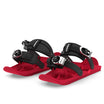
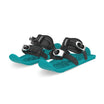












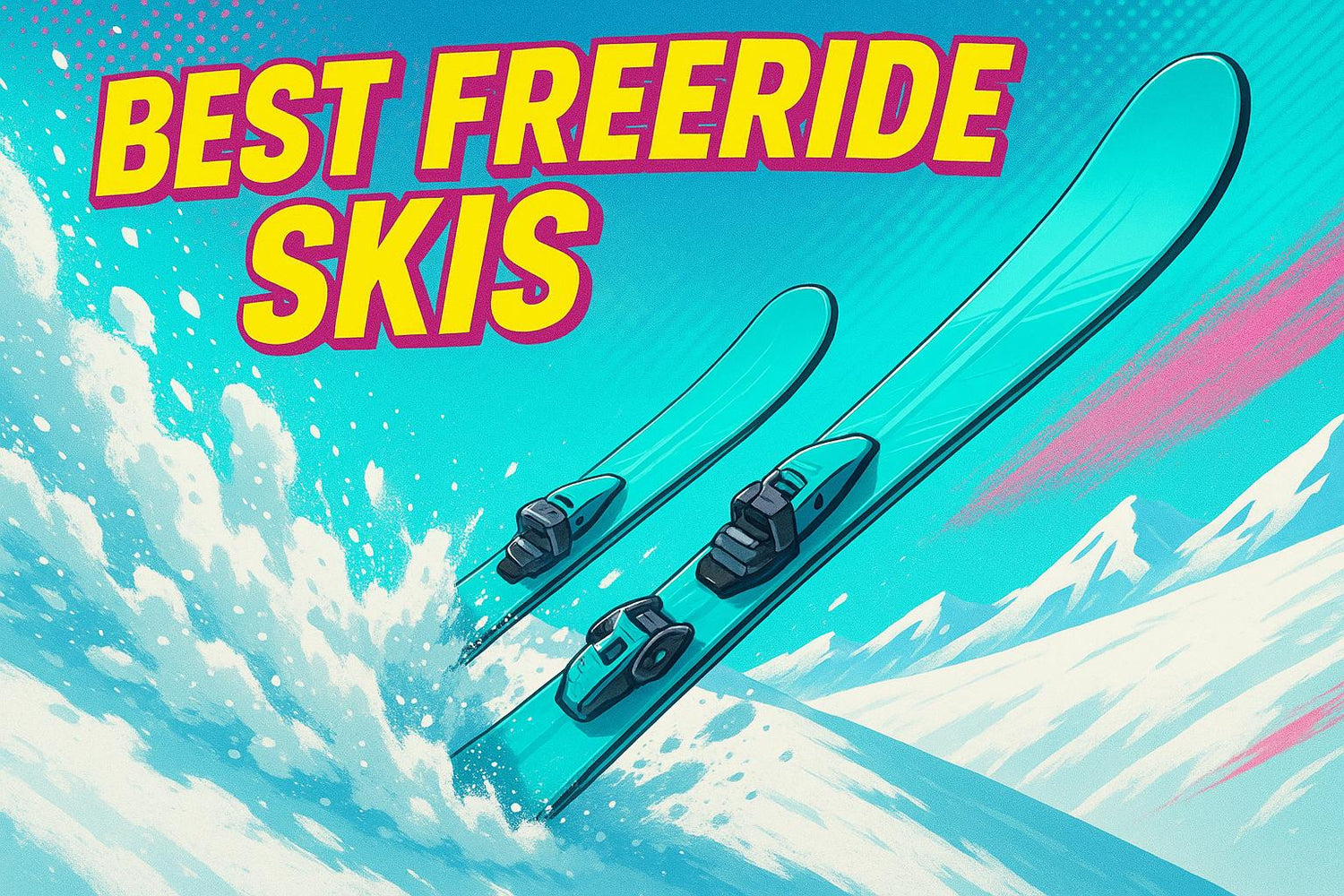
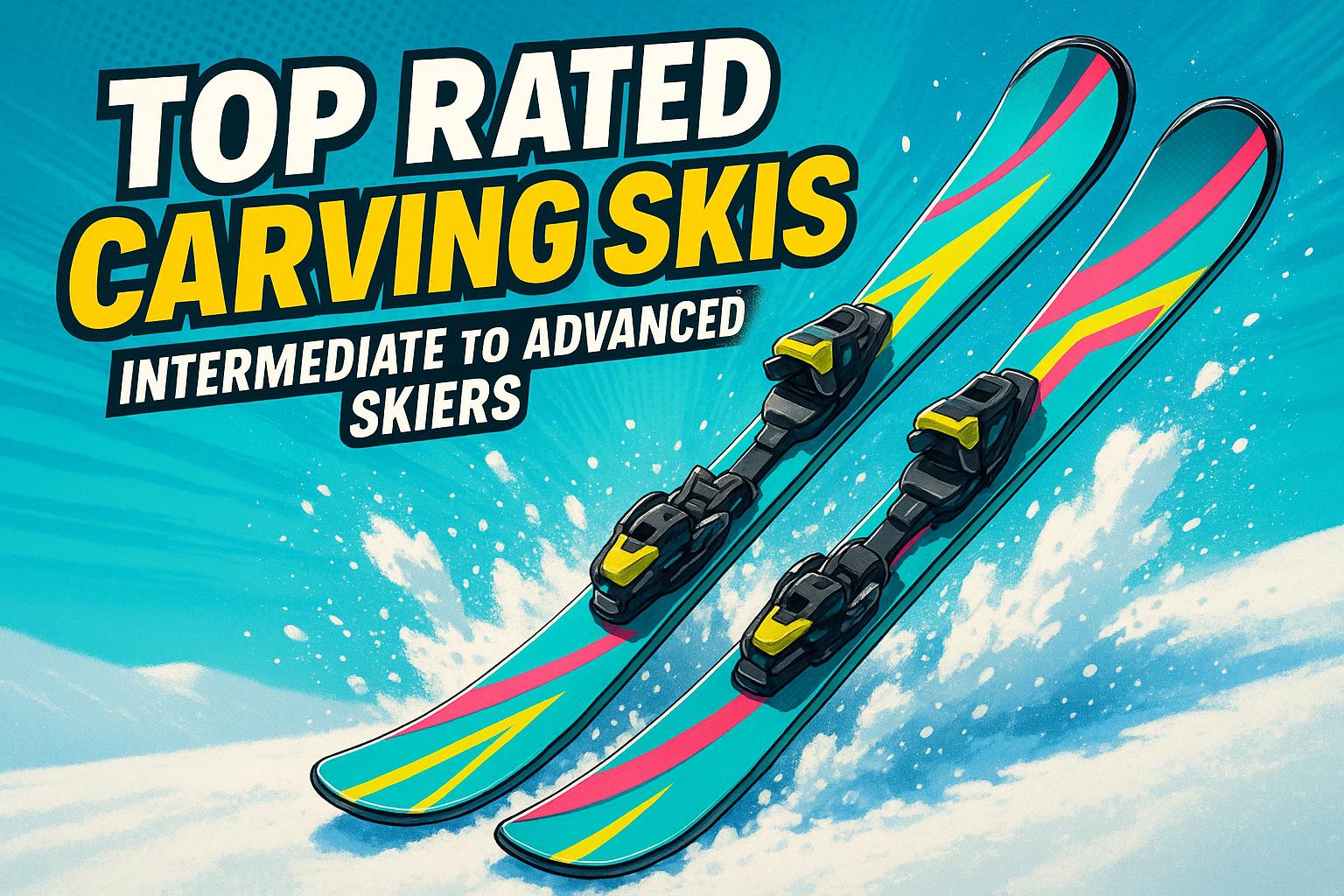
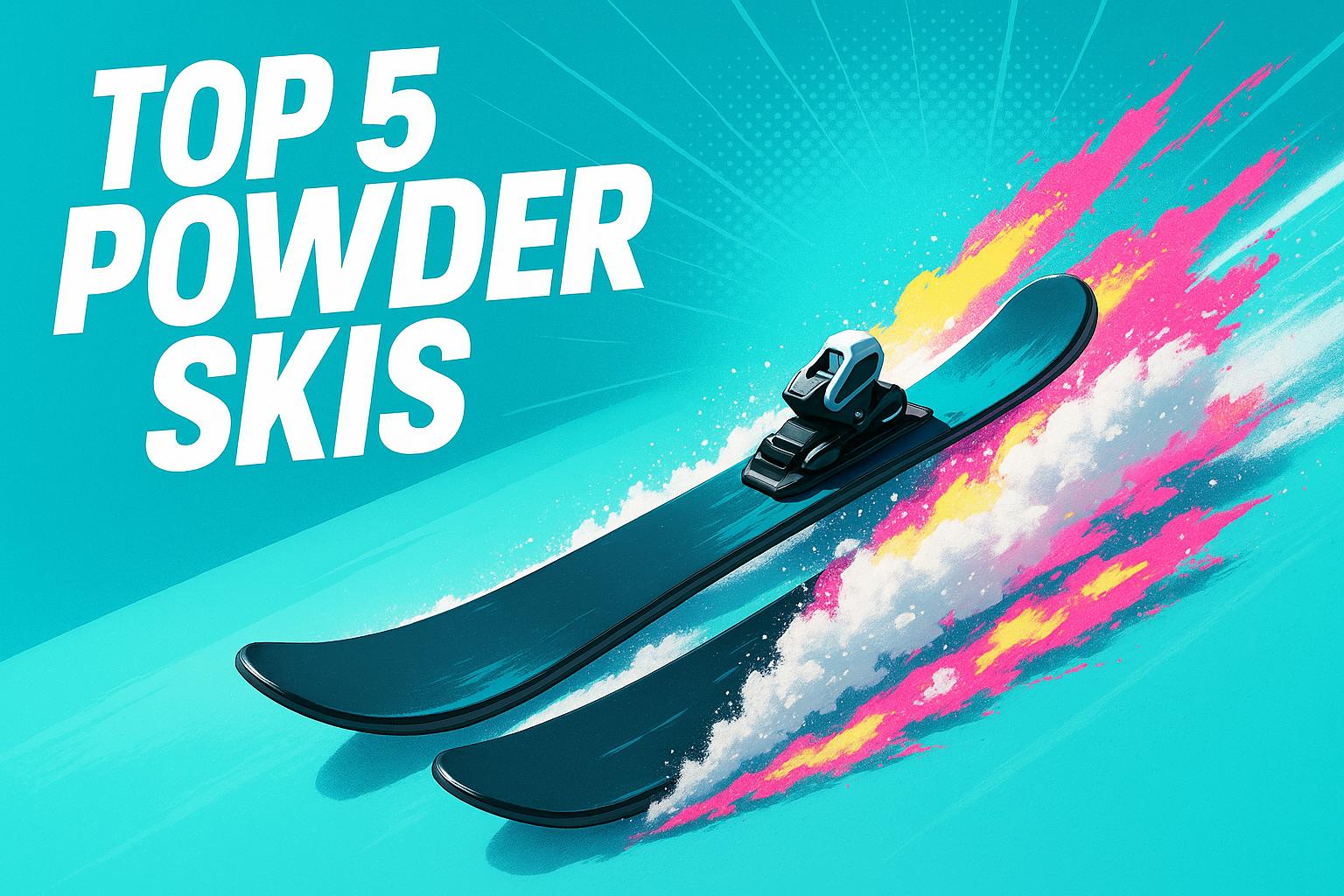




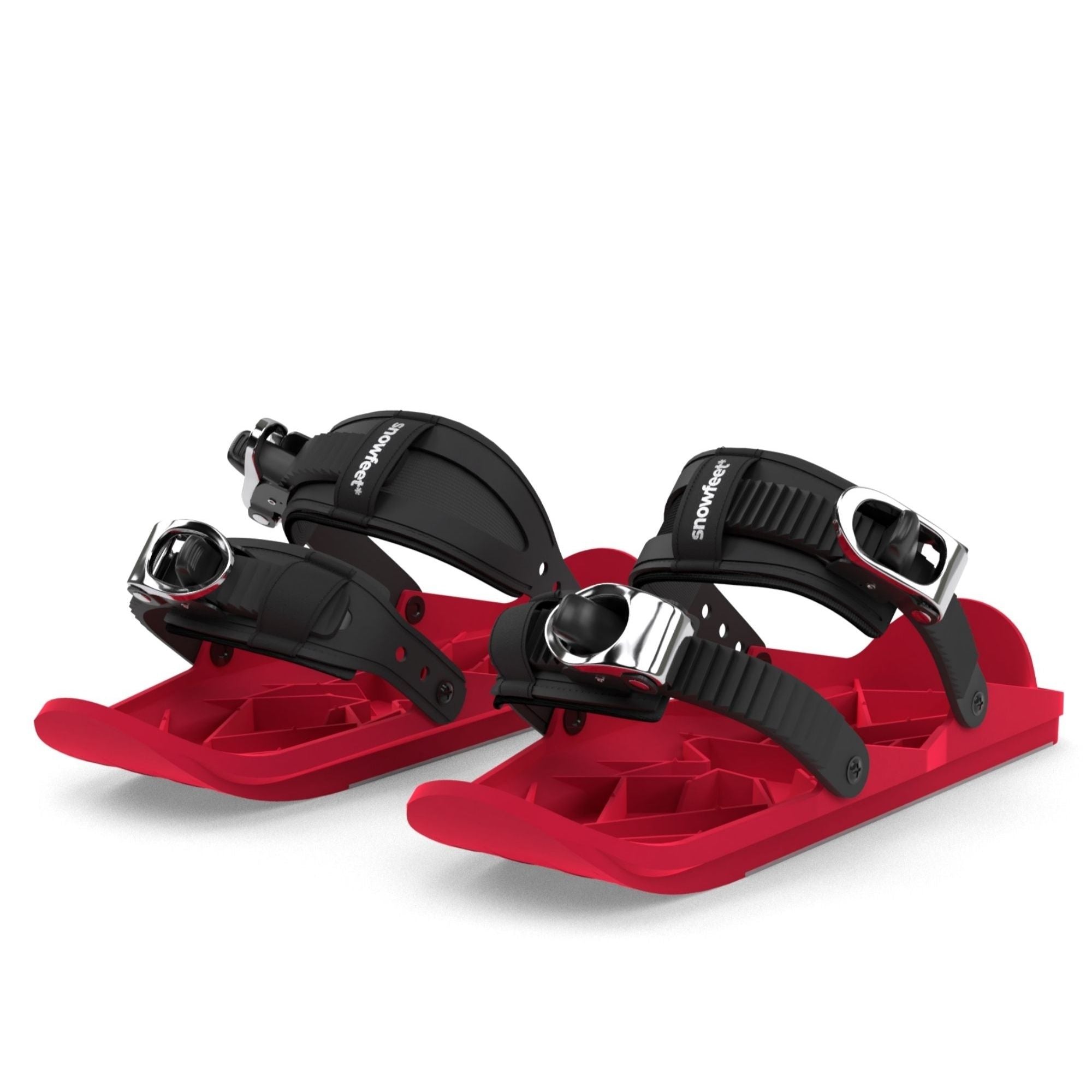
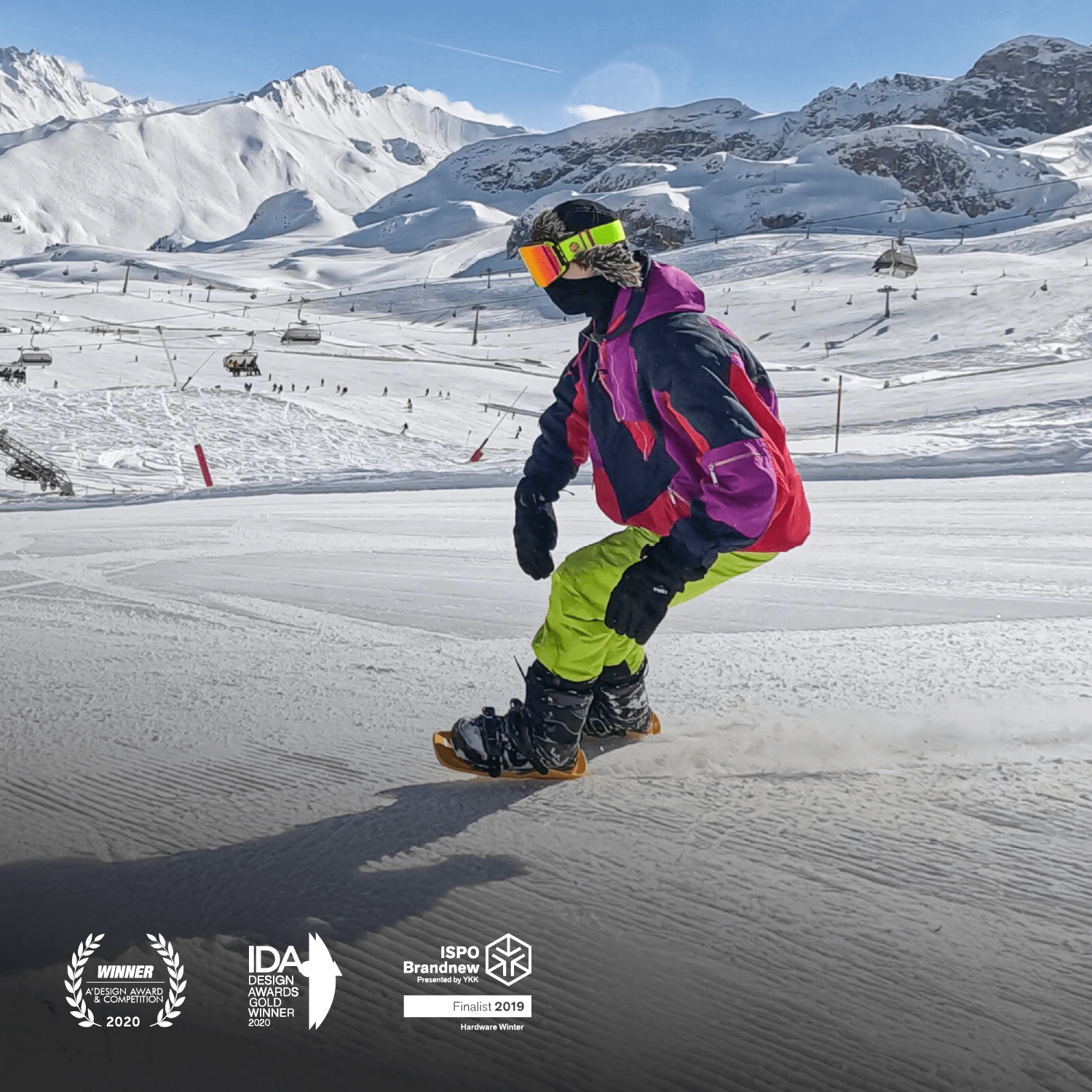




Zostaw komentarz
Ta strona jest chroniona przez hCaptcha i obowiązują na niej Polityka prywatności i Warunki korzystania z usługi serwisu hCaptcha.